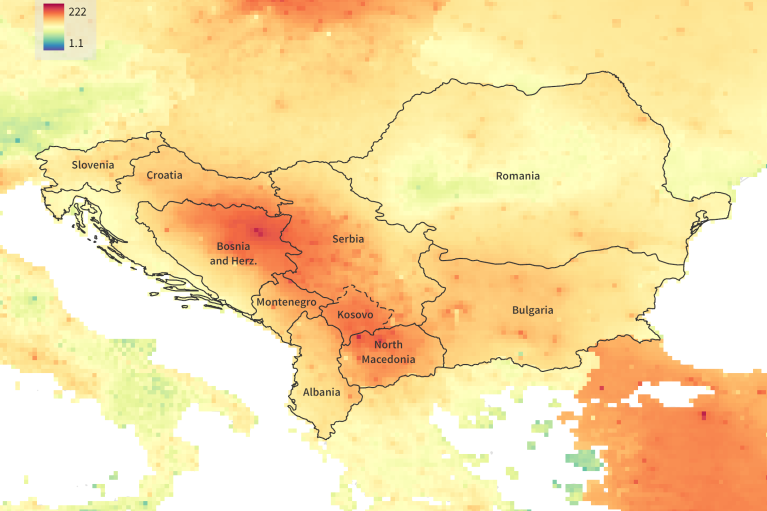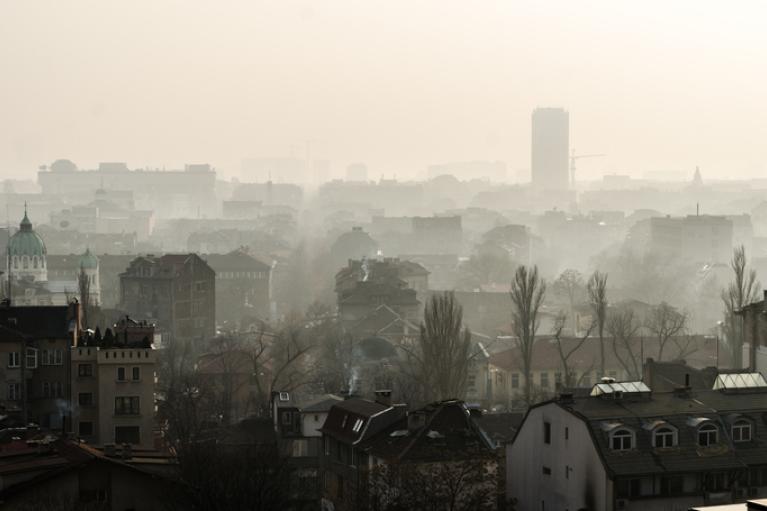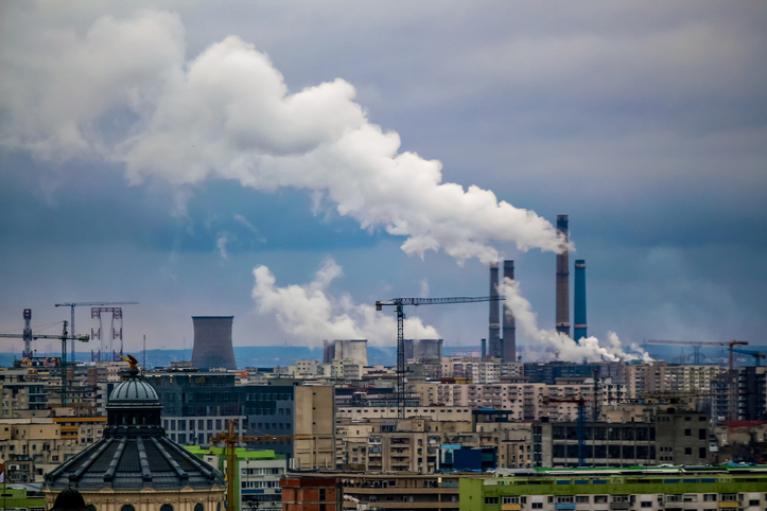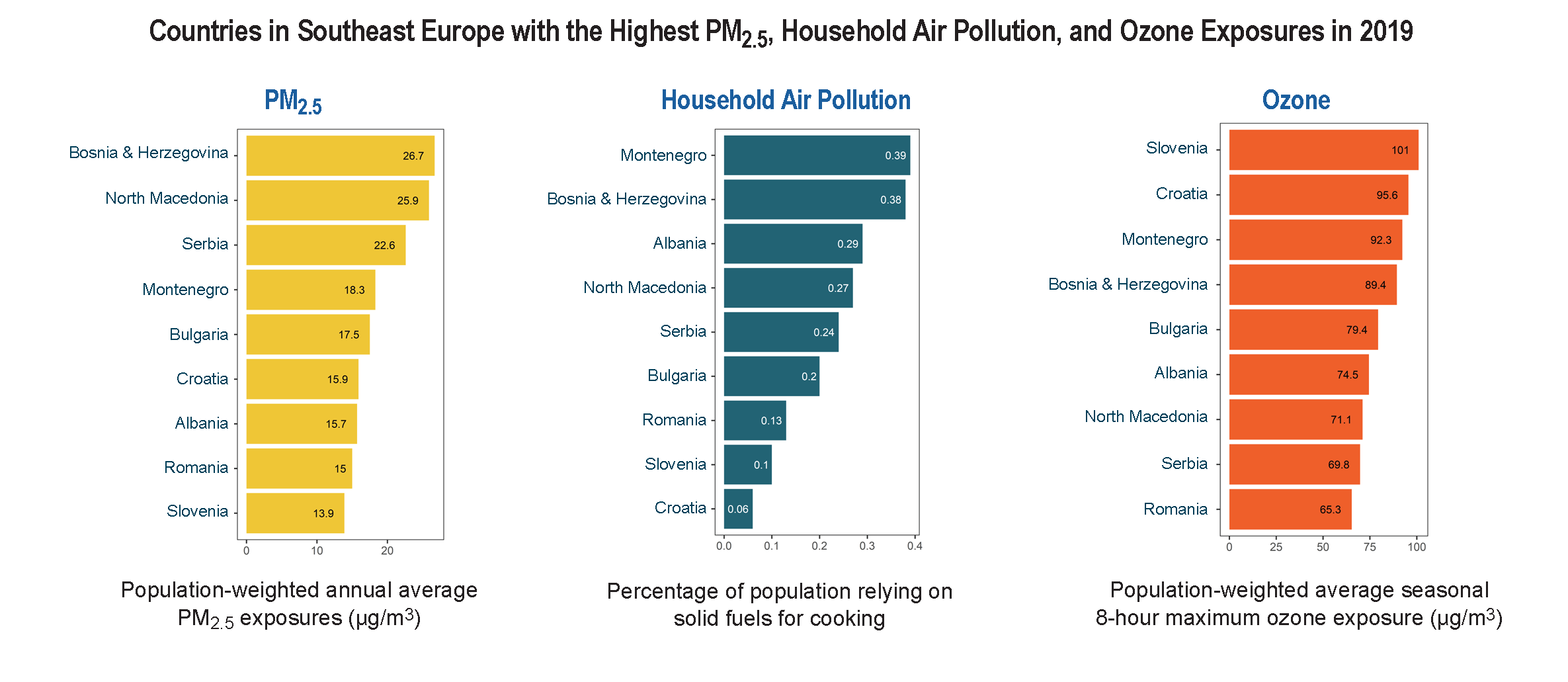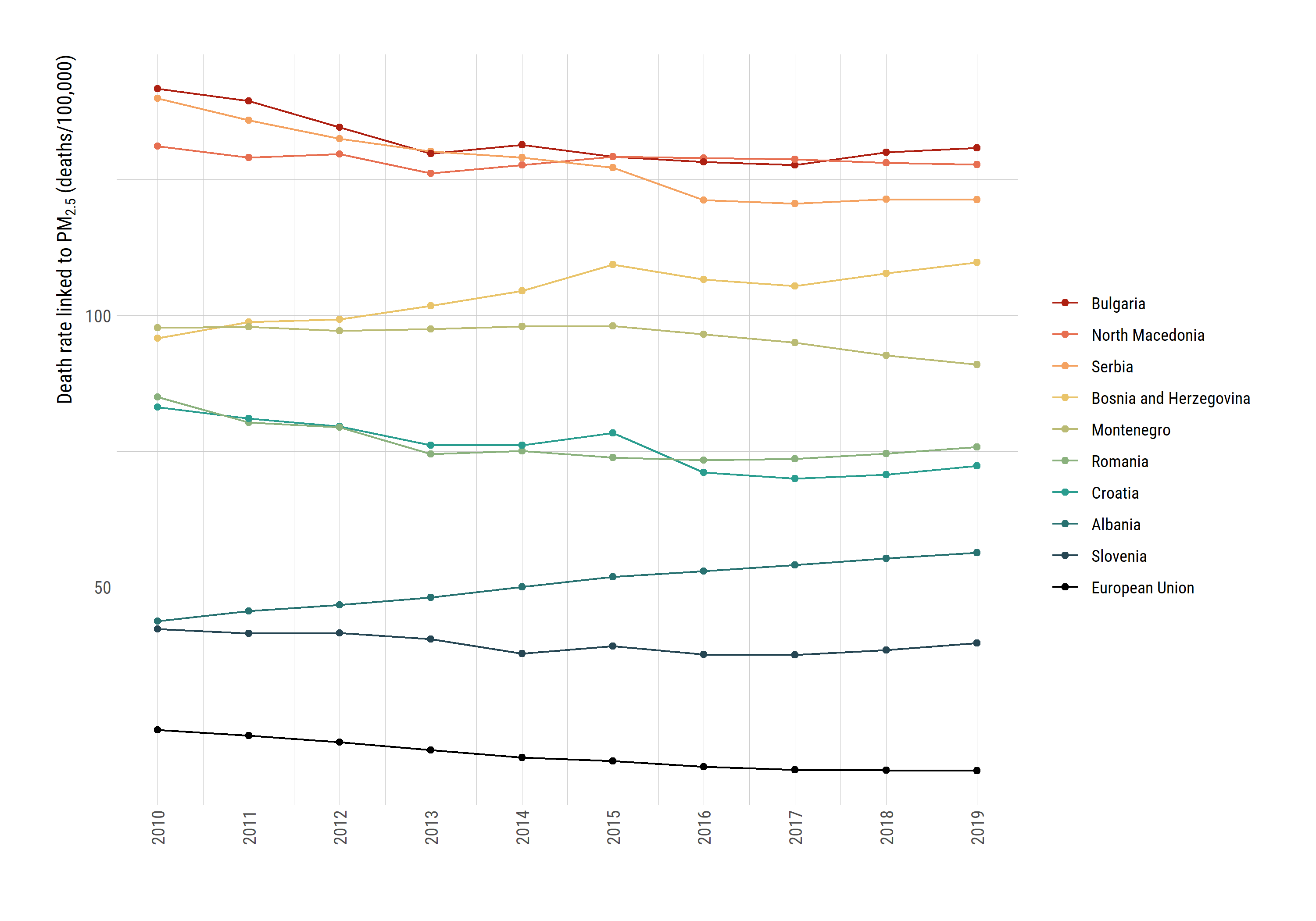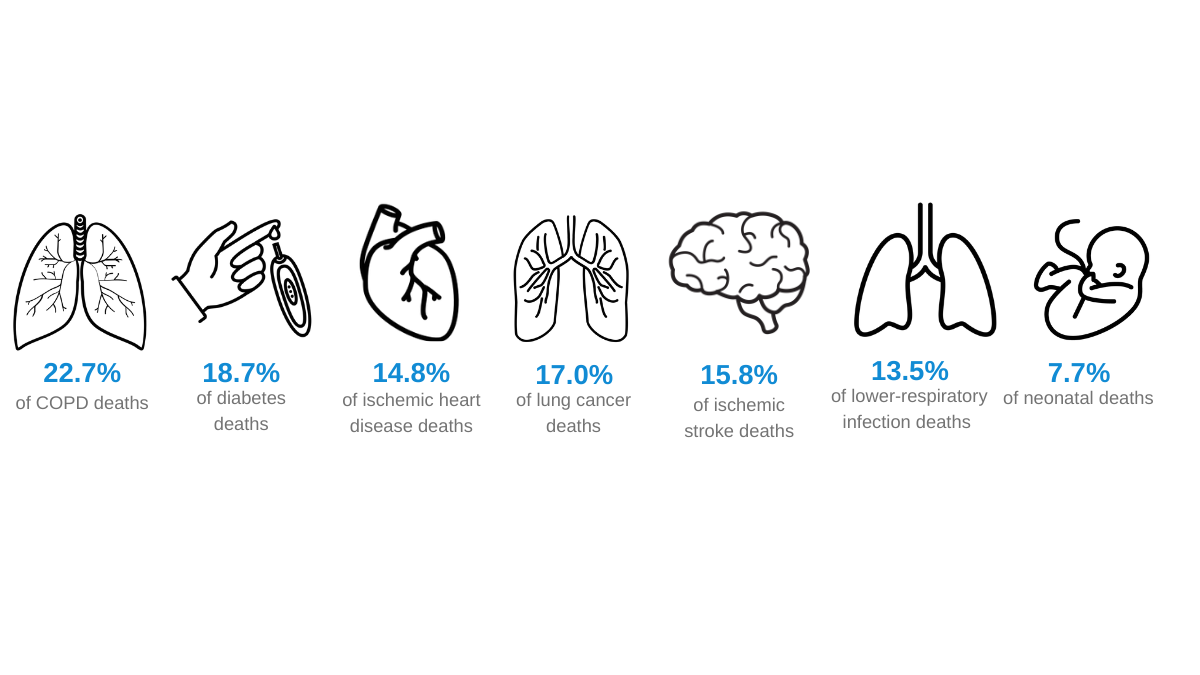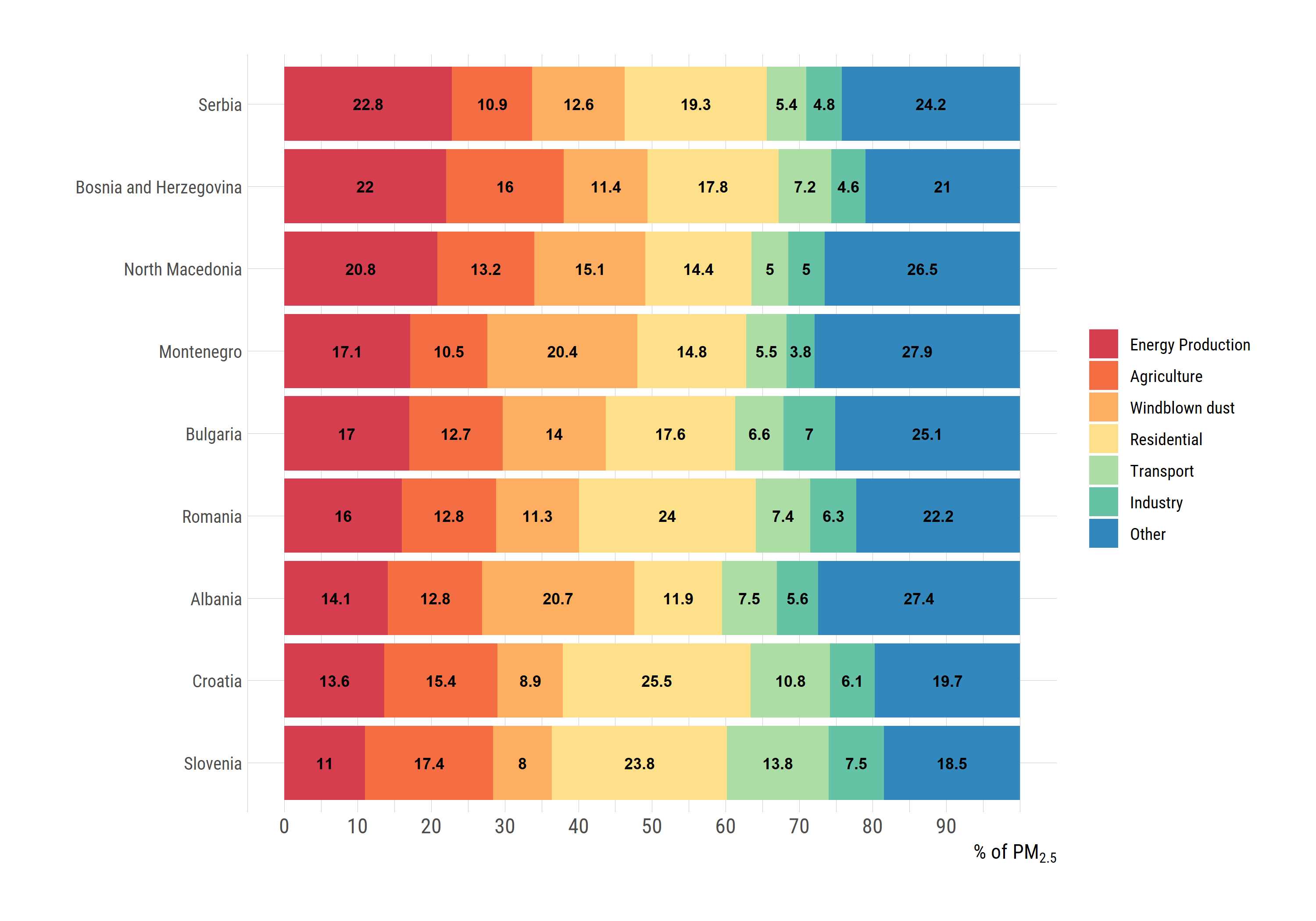UNEVEN PROGRESS
Exposure to air pollutants remains high across the region.
The highest annual average of PM2.5 exposures in 2019 was observed in North Macedonia (30.3 μg/m3, UI: 27.4-33.1μg/m3), while Romania had the lowest exposure (15.7 μg/m3, UI: 12.7-16.9 μg/m3).
Although PM2.5 levels in countries across the region were consistently lower than the global average for PM2.5 exposure (42.6 μg/m3, UI: 32.5–36.5 μg/m3) in 2019, the exposures are much higher compared to the EU average, and severalfold higher than the annual WHO Air Quality Guideline value of 5 μg/m3. In fact, with the exception of Poland (22.6 μg/m3, UI: 13–35.2 μg/m3), Southeast European countries almost exclusively make up the list of top five countries with the highest ambient PM2.5 levels in Europe.
Figure FF: Countries in Southeast Europe with the highest PM2.5, household air pollution, and ozone exposures in 2019.
LARGE IMPACTS
Rate of deaths due to air pollution is much higher than other parts of Europe.
More than 56,000 deaths were linked to exposure to air pollution in Southeast Europe in 2019. The average rate of death attributable to air pollution was nearly four times higher in this region than the related rate across Western Europe. Notably, the total number of air pollution–attributable deaths declined by 16.5% between 2010 and 2019, with the exception of Albania, where the total estimated deaths increased by 7%.
Figure GG: Trends in death rate linked to PM2.5 in Southeast Europe 2010–2019.
In Southeast Europe, noncommunicable diseases rank among the most frequent causes of death, with heart diseases, diabetes, chronic lung diseases, and infections ranking among the top 10 causes of death. Many of the same diseases are also linked with exposure to air pollution. For example, on average, nearly 23% of all COPD-related deaths were attributed to air pollution, with the largest impacts seen in Bosnia and Herzegovina (30%) and North Macedonia and Montenegro (each 26%).
Figure HH: Percentage of deaths (by cause) linked to air pollution in 2019 in Southeast Europe.
Exposure to air pollution can also impact the health of newborns (video). Exposure to air pollution accounted for 7.7% of infant deaths, with most deaths attributed to outdoor PM2.5. The percentage of infant deaths linked to air pollution in 2019 was largest in Bosnia and Herzegovina (11%) and North Macedonia (10%). More about air pollution and infant health.
ENERGY AND CLIMATE
Fossil fuel use is a key contributor to poor air quality and ill health.
Fossil fuel (coal, oil, and natural gas) combustion contributes between 29% to 35% of outdoor PM2.5 exposures in Southeast European countries. Residential combustion and energy production are the largest contributors to deaths related to air pollution in Southeast Europe, resulting in 18,400 deaths in 2019. Agriculture, transport, and industry are also important contributors to the PM2.5 disease burden in many Southeast European countries.
Because a majority of PM2.5 in outdoor air comes from anthropogenic fuel combustion — including fossil fuels and solid biofuels — integrating air quality, energy, and climate policies is likely to bring substantial health benefits, especially to those most at risk (video). Energy poverty and access to clean energy remain key issues; a significant proportion of the region’s population is unable to afford to heat their homes or lack access to the centralized energy systems that rely on energy-intensive and polluting lignite coal power plants.
FIGURE II: Percentage of PM2.5 from five major sources in nine Southeast European countries in 2019.
